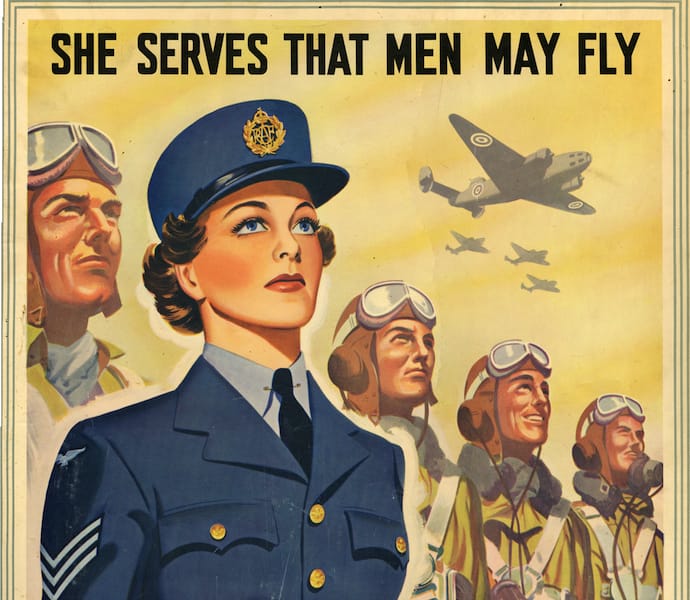
In 1939 there were no women in the RCAF. The RCAF Women's Division began in 1941 and employed over 17,000 women in non-combat roles. Twenty from Women's Division received the British Empire Medal, 12 officers received the Member of the British Empire, and one officer, Dr. Jean Davey, was awarded the Order of the British Empire. Twenty-eight Women's Division died during the war from various causes. Museum Canada 150 Project (BCATP)
Squadron Officer Kathleen Lorena Jeffs (Toronto), awarded MBE (Member of the British Empire), January 1, 1944 for work in the Directorate of Supply Administration, AFHQ, Ottawa.
Squadron Officer Jeffs, as Chief Messing Officer to the RCAF, has personally reorganized the messing services and established a messing branch of the Women's Division consisting of highly qualified dieticians. Under her direction a very high standard of Service messing has been achieved which has been an important contribution to the welfare and morale of aircrew training in Canada. This officer has displayed outstanding ability and energy in the performance of her duties.
Both WW1 and WW2 exapnded the roles of women. Women also continued in traditional roles, those roles were more highly valued.
- These videos describe the exapnding role for women in both wars, as well as expand on the tradional roles in war time.
 Women at War World War 1 (York University 6:44)
Women at War World War 1 (York University 6:44)
- In 1941-1942 the Women's Division was official added to the RCAF. It was mostly a measure to free up man for combat. However many women had very distinguished service records.
 RCAF Women's Division from Juno Beach Centre
RCAF Women's Division from Juno Beach Centre RCAF Women's Division in Britain (1:43)
RCAF Women's Division in Britain (1:43)
- Elsie MacGill, "Queen of the Hurricanes".
 Elsie MacGill, first women Aerospace Engineer, was also a comic book hero.
Elsie MacGill, first women Aerospace Engineer, was also a comic book hero. Queen of the Hurricanes (1:00)
Queen of the Hurricanes (1:00) Elsie MacGill, Queen of the Hurricanes (5:29)
Elsie MacGill, Queen of the Hurricanes (5:29) Roberta Bondar on Elsie MacGill
Roberta Bondar on Elsie MacGill Elsie MacGill Comic Book story from WW2
Elsie MacGill Comic Book story from WW2
- Special Military Roles of Women in Canada
 Canadian Women Codebreakers (11:43)
Canadian Women Codebreakers (11:43) Canadian Women in Air Transport Auxiliary (3:33)
Canadian Women in Air Transport Auxiliary (3:33)
- Women Pilots in Canada
Today woman pilots in Canada are too numerous to mention, but that has not always been the case. These are some of women who pioneered the change in women's roles in flying.
 Canadian Woman Pilots Through the Years
Canadian Woman Pilots Through the Years
Air War Casualtues: Women in War (2)
Assignment:
- Review the videos and links above (sections 1-5)
- Review Joan Margaret Cole-Hamilton
- Review Maxine Gloeckner
- Answer the questions below

